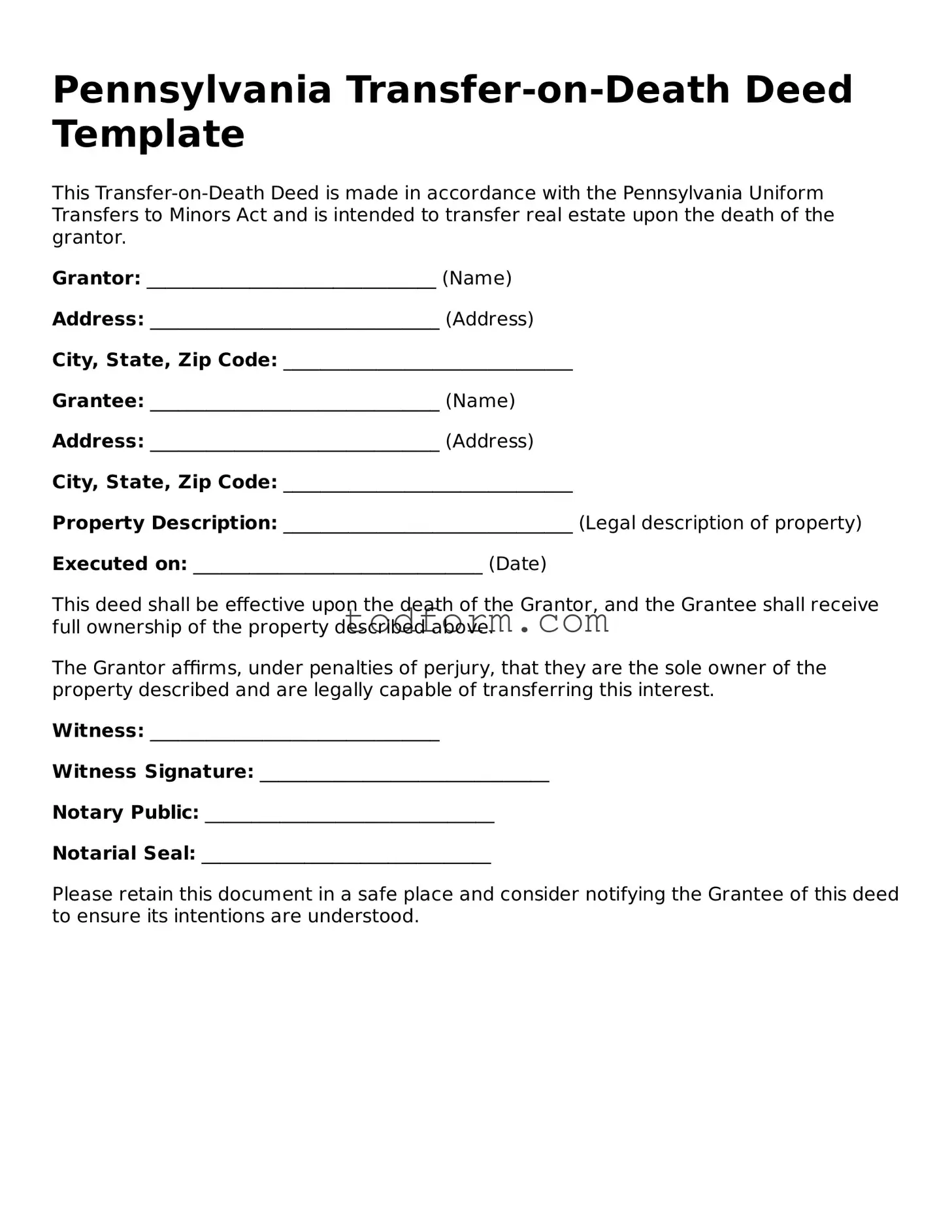The Pennsylvania Transfer-on-Death Deed (TODD) allows individuals to transfer real estate to a beneficiary upon their death without the need for probate. This document is similar to a Last Will and Testament, which also facilitates the transfer of property after death. However, unlike a will, a TODD does not require court involvement or probate proceedings, making it a more straightforward and cost-effective option for many individuals. Both documents serve the purpose of ensuring that property is passed on to designated heirs, but the TODD provides immediate transfer upon death, while a will may take time to be executed through the probate process.
Another document that shares similarities with the TODD is the Revocable Living Trust. A living trust allows individuals to place their assets into a trust during their lifetime, which can then be distributed to beneficiaries upon their death. Like the TODD, a living trust bypasses probate, allowing for a smoother transition of property. However, a living trust requires more initial setup and maintenance, while the TODD is a simpler, one-time document that can be easily recorded with the county.
The Beneficiary Designation form, often used for bank accounts and retirement plans, is also akin to the TODD. This form allows individuals to designate beneficiaries who will receive their accounts directly upon death, avoiding probate. Both the Beneficiary Designation and the TODD provide a way to transfer assets outside of the probate process, ensuring a quicker and more efficient transfer to loved ones.
Life estates are another relevant document that bears resemblance to the TODD. A life estate allows an individual to retain the right to live in or use property during their lifetime, with the property passing to a designated remainderman after their death. Like the TODD, a life estate can simplify the transfer of property, but it also imposes certain restrictions on the life tenant, such as limitations on selling or mortgaging the property without the remainderman’s consent.
The Joint Tenancy with Right of Survivorship is another estate planning tool that mirrors the TODD's function. In this arrangement, two or more individuals hold title to a property together, and upon the death of one owner, the surviving owner(s) automatically inherit the deceased's share. This method effectively avoids probate, similar to the TODD, but it requires co-ownership during the lifetime of the individuals involved.
Another document that is comparable to the TODD is the Payable-on-Death (POD) account designation. This financial instrument allows individuals to name a beneficiary for their bank accounts. Upon the account holder's death, the funds transfer directly to the named beneficiary, bypassing probate. Like the TODD, the POD designation ensures that assets are passed on quickly and without the complexities of the probate process.
The Transfer-on-Death Registration for vehicles serves a similar purpose for personal property, particularly automobiles. This document allows vehicle owners to designate a beneficiary who will automatically inherit the vehicle upon the owner's death. Both the TODD and the vehicle transfer-on-death registration provide straightforward methods for transferring ownership without the need for probate, streamlining the process for heirs.
Finally, the Declaration of Trust is another document that can be compared to the TODD. A Declaration of Trust outlines the management and distribution of assets held in trust upon the death of the trustor. While both documents facilitate the transfer of property outside of probate, a Declaration of Trust typically involves more complexity and ongoing management compared to the straightforward nature of a TODD.
